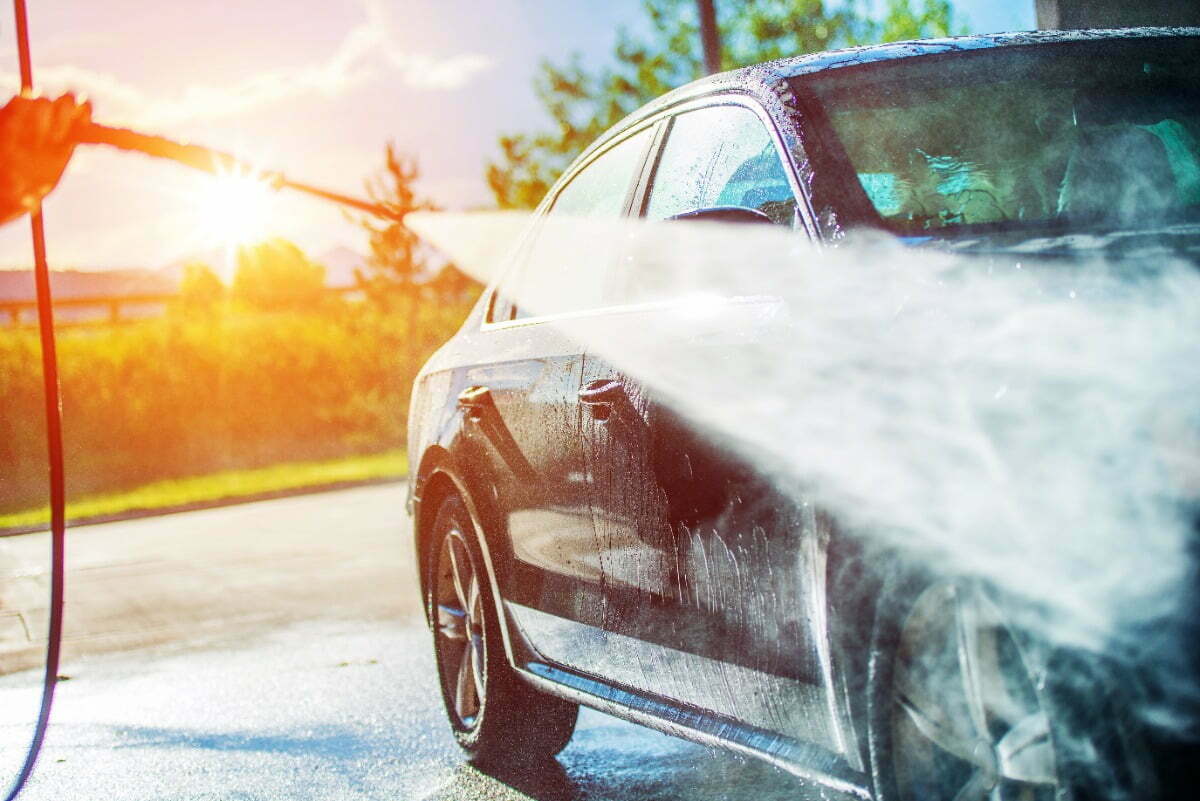
If you’ve ever driven through a mud puddle or parked under a tree that rains sap, you know how grimy your car can get. A quick hose rinse might not cut it, and commercial car washes aren’t always convenient or cheap. So you might be wondering: Can I just use a pressure washer to clean my car at home?
The short answer is: Yes, you can—but only if you do it properly. ✅ Done right, pressure washing can be a fast and effective way to clean your vehicle. Done wrong, it can chip paint, dent panels, or force water into delicate components. 😬
In this article, we’ll break down how to safely pressure wash your car, what to avoid, and which tools make the process a breeze.
💡 Is It Safe to Pressure Wash Your Car?
Yes—but only with the right pressure settings and technique. Cars are built to withstand rain, snow, and road spray, but they aren’t designed to take a high-pressure blast at close range.
Too much pressure can:
- Strip off clear coat or paint 🎨
- Dent body panels
- Force water into seals, sensors, or electrical systems
- Scratch the surface if you blast in debris
That’s why understanding how to use a pressure washer properly is key. 🚿
🛠️ What Type of Pressure Washer Should I Use?
For car washing, you don’t need a super high-powered machine. In fact, less is more here.
✅ Ideal specs:
- 1,200–1,900 PSI is perfect (never go over 2,000 PSI)
- Electric pressure washers are typically better suited than gas models for this purpose
- GPM (gallons per minute): 1.4–1.6 is enough
💡 Bonus: Look for pressure washers with detergent tanks and adjustable nozzles to simplify your process.
🔫 Nozzles: Choose Wisely
Use a 40-degree white nozzle or a soap nozzle:
- These create a wide spray pattern that won’t damage paint
- Avoid narrow nozzles like the red (0°) or yellow (15°) tips—they’re too intense ❌
Maintain a distance of at least 12–18 inches from the car’s surface at all times to prevent damage.
🧴 Best Cleaning Products to Use
Always use a car-specific wash soap. Dish soaps and degreasers can:
- Strip protective wax
- Damage rubber seals
- Dry out plastic trim
✅ Look for a pH-balanced automotive detergent that’s safe for paint and clear coats.
Browse Amazon Here For Popular Pressure Washers And Accessories
🚘 Step-by-Step: How to Pressure Wash Your Car at Home
- Pre-rinse your car
- Use plain water and your wide-angle nozzle
- Knock off loose dirt, mud, or bugs before applying soap
- Apply soap
- Use your machine’s soap nozzle or foam cannon
- Let it sit for a minute (don’t let it dry!)
- Gently scrub (optional)
- Use a microfiber mitt or soft sponge
- Focus on wheels, lower panels, and bug-splattered areas
- Rinse
- Switch back to your 40° nozzle
- Work top to bottom with sweeping motions
- Dry
- Use a clean microfiber towel or air blower
- Avoid air-drying, which can leave water spots
✨ Now your ride looks like it just rolled out of the showroom!
🧼 Pro Tips for an Even Better Wash
- Wash in the shade or on a cool day to avoid soap drying too quickly
- Use two buckets if hand washing (one for soap, one for rinse water)
- Don’t forget the wheel wells, grille, and undercarriage
- Never spray directly into door jambs, tailpipe, or engine bay unless you know how to protect them
⚠️ Mistakes to Avoid
- Spraying too close to paint
- Using high PSI or narrow nozzles
- Letting soap dry on the surface
- Using household cleaners or bleach-based solutions
- Ignoring wheels—brake dust is corrosive!
Even one slip-up can leave permanent damage on a vehicle’s finish. Proceed with care! 🛑
🧠 Final Thoughts
Yes, you can pressure wash your car at home—and it can even be fun when done right! 😎💧
To recap:
- Use low pressure and wide-angle nozzles
- Choose car-friendly soap
- Always maintain a safe distance
- Avoid direct spray into sensitive areas
- Dry thoroughly to prevent spotting
Treat your vehicle gently, and it will reward you with a clean, glossy finish that turns heads. 💥🚗✨
Browse Amazon Here For Popular Pressure Washers And Accessories






